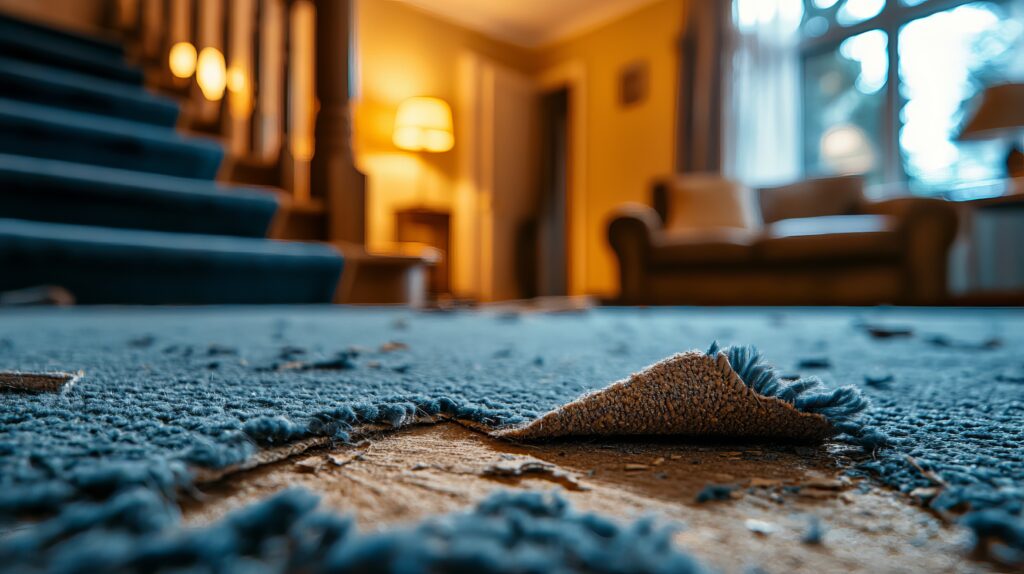Wondering If It’s Time to Replace Your Floors? Here’s How to Know
Common signs that it’s time to replace your flooring include visible wear, damage, odors, outdated styles, and comfort issues. In this guide, you’ll learn how to spot when your flooring needs to go—and how to choose the best new option for your space, budget, and lifestyle.

Sign #1 – Noticeable Wear and Tear
- Carpet looks matted, threadbare, or permanently indented in traffic areas
- Hardwood or laminate flooring has deep scratches or dulled finish that no longer restores
- Vinyl is cracking, curling, or separating at the seams
- Flooring has uneven color or patchy areas from sunlight and age
- The floor looks worn even when clean—lacking its original visual appeal
Sign #2 – Water Damage or Stains That Won’t Go Away
- Wood or laminate is swollen, warped, or separating from moisture exposure
- Carpet has deep-set stains from spills, pets, or leaks
- Vinyl or tile shows signs of bubbling, lifting, or adhesive failure
- Musty or sour odors linger despite deep cleaning
- Mold or discoloration appears at edges, especially near walls or under furniture
Sign #3 – Uneven, Soft, or Noisy Flooring
- The floor feels spongy, hollow, or unstable underfoot
- Squeaking, shifting, or clicking noises when walked on
- Dips or raised spots create a noticeable uneven surface
- Planks or tiles no longer lie flat or lock together properly
- Gaps are forming between seams or along walls
Sign #4 – Persistent Odors or Rising Allergy Issues
- Carpet retains odors from pets, smoke, or age
- Mold or mildew smells coming from underneath hard flooring
- Floors trap allergens like dust, pollen, or pet dander
- You or family members experience allergy flare-ups indoors
- Even after cleaning, the flooring “feels” dirty or stale
Sign #5 – Outdated Look That No Longer Fits Your Style
- Your flooring clashes with your current furniture or interior design
- Dated patterns or colors make the space feel old-fashioned
- Multiple flooring types in one area make the home feel disjointed
- Flooring was builder-grade or low-cost and no longer suits your taste
- You want to improve resale appeal with a modern, cohesive look
Sign #6 – Decreased Comfort or Safety
- Worn Hardwood flooring surfaces cause foot or joint fatigue, especially in kitchens or hallways
- Slippery tile, laminate flooring, or worn finishes increase the risk of slips and falls
- Carpet has flattened or lost padding, offering little to no comfort underfoot
- Uneven planks or loose tiles create tripping hazards and disrupt smooth walking
- Temperature transfer from cold floors makes rooms feel less cozy and inviting
Sign #7 – You’ve Already Tried Repairs (and It’s Not Enough)
- Multiple patch jobs, refinishes, or re-caulking have only provided temporary fixes
- Stains, damage, or uneven wear continue to reappear after cleaning or repair
- Costs of ongoing maintenance are adding up with little long-term improvement
- Repairs no longer restore appearance or function—floors still look aged
- Replacing the flooring offers better value, durability, and visual impact
